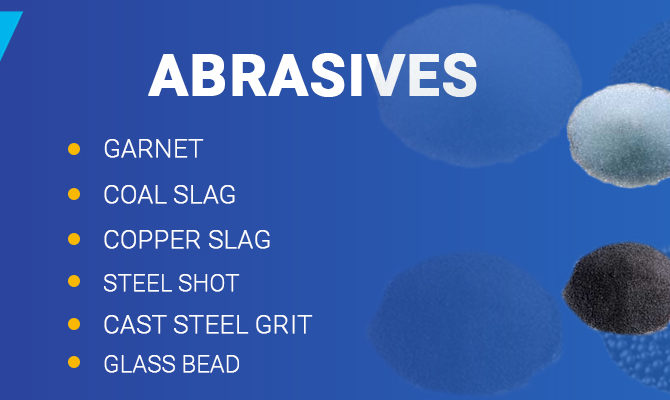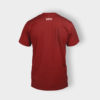
Choosing the Right Abrasive Media for Efficient Sand Blasting
In the introduction, we should begin by setting the stage. Sand blasting is a powerful surface preparation technique used across various industries, including construction, automotive, and manufacturing. It involves forcibly propelling abrasive material against a surface to remove contaminants, rust, paint, or other unwanted substances. Highlight the importance of abrasive media selection in achieving desired sand blasting results, as this is a critical aspect that often determines project success.
Understanding Sand Blasting:
Sand blasting, also known as abrasive blasting, is a versatile and powerful process used across a wide range of industries for various applications. This section provides a comprehensive understanding of sand blasting, its purpose, applications, and its significance in the world of surface preparation and finishing.
What is Sand Blasting? At its core, sand blasting is a surface preparation technique that involves forcibly propelling abrasive materials at high velocity to clean, shape, or etch a surface. The abrasive materials can vary widely and may include sand, glass beads, aluminum oxide, steel grit, garnet, and more. The choice of abrasive media depends on the specific needs of the project. The term “sand blasting” is somewhat misleading because sand is rarely used today due to health concerns associated with silica dust. Instead, safer and more effective abrasive materials are commonly employed.
Applications of Sand Blasting Sand blasting is a versatile technique with applications in various industries:
- Automotive Industry: In auto body shops, sand blasting is used to remove old paint, rust, and corrosion from vehicle surfaces. It prepares surfaces for refinishing or painting, ensuring a clean and smooth canvas.
- Construction: Sand blasting is employed in the construction industry for cleaning and texturing surfaces, such as concrete and stone. It’s used to remove paint, coatings, and contaminants from structures and bridges.
- Aerospace: In the aerospace industry, sand blasting is used for cleaning and preparing aircraft components. This ensures the highest level of safety and performance.
- Marine: Sand blasting is integral in marine applications for removing rust and corrosion from ship hulls and preparing them for protective coatings.
- Manufacturing: Various manufacturing processes rely on sand blasting for surface finishing, deburring, and descaling of parts.
- Art and Restoration: Artists and restorers use sand blasting to create intricate designs on glass, metal, and stone or to restore historical artifacts.
The Importance of Sand Blasting Sand blasting plays a crucial role in achieving the desired surface quality and finish in these applications. It can effectively remove contaminants, rust, paint, scale, and other unwanted substances from surfaces. The process is not limited to cleaning; it also roughens or smoothens surfaces, providing the desired texture for subsequent processes like painting or coating.
The key to successful sand blasting lies not only in the technique but also in the choice of abrasive media. Different projects require different levels of aggressiveness, and selecting the right abrasive media is essential to achieving the desired outcome without causing damage to the substrate.
Understanding the capabilities and limitations of sand blasting is fundamental for professionals in the field. It’s a technique that combines science and craftsmanship, as the choice of abrasive media, nozzle type, pressure, and distance from the surface must be precisely calibrated to achieve optimal results.
Importance of Abrasive Media:
Importance of Abrasive Media in Sand Blasting
Abrasive media plays a pivotal role in the process of sand blasting, and its importance cannot be overstated. The choice of abrasive media has a direct impact on the outcome of a sand blasting project. Here’s a detailed look at why abrasive media selection is crucial:
- Material Removal and Surface Preparation: The primary purpose of sand blasting is to remove contaminants, paint, rust, or other unwanted substances from a surface. The abrasive media serves as the agent that physically removes these materials. Different types of abrasive media have varying levels of cutting ability and aggressiveness. The right media must be chosen to efficiently remove the specific contaminants without damaging the underlying surface.
- Achieving Desired Finish: The finish of the surface after sand blasting is largely determined by the abrasive media used. For example, some media produce a smooth, polished finish, while others create a textured or rough surface. This means that choosing the right abrasive media allows you to achieve the desired surface finish, whether it’s for aesthetic purposes or functional requirements.
- Material Compatibility: Different materials, such as metals, wood, concrete, or composites, have varying degrees of hardness and sensitivity. Abrasive media selection must take into account the compatibility between the media and the material being treated. Using the wrong abrasive media can result in damage to the surface, such as pitting or warping, which can be costly to rectify.
- Project Efficiency: The correct abrasive media can significantly increase the efficiency of a sand blasting project. Using an abrasive that effectively removes contaminants while minimizing the need for extensive rework or multiple passes not only saves time but also reduces the consumption of abrasive material.
- Cost-Effectiveness: Abrasive media represents a significant portion of the overall cost of sand blasting. Choosing the right media for the job ensures that resources are not wasted on inefficient or unnecessary materials. This, in turn, contributes to the cost-effectiveness of the sand blasting process.
- Environmental Considerations: Some abrasive media, such as certain metallic abrasives, can generate dust and particulate matter that may have environmental and health implications. Choosing the appropriate media can help minimize these concerns and ensure compliance with environmental regulations.
- Worker Safety: The safety of personnel involved in sand blasting is of utmost importance. Some abrasive media may produce airborne dust or fumes that can be harmful when inhaled. Proper abrasive media selection can mitigate these risks by reducing the generation of hazardous materials, making the work environment safer.
- Longevity of Equipment: The abrasive media used can also impact the longevity of sand blasting equipment. Some media are more abrasive and can accelerate wear and tear on nozzles, hoses, and other components. Selecting media that are compatible with the equipment can extend its lifespan and reduce maintenance costs.
In conclusion, the choice of abrasive media in sand blasting is a critical decision that directly affects the success of a project. Whether you’re working on a large-scale industrial operation or a smaller DIY task, understanding the importance of abrasive media selection is essential to achieve the desired results efficiently, cost-effectively, and safely. It’s a decision that requires careful consideration of the material being treated, the desired finish, and other project-specific factors.
Leave a reply




Most Commented